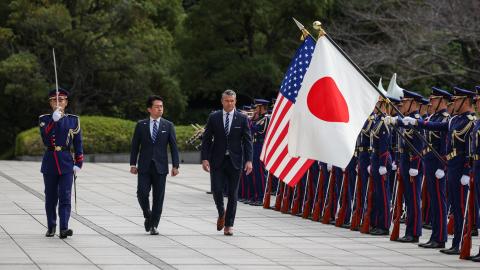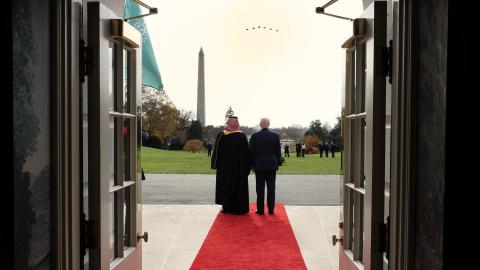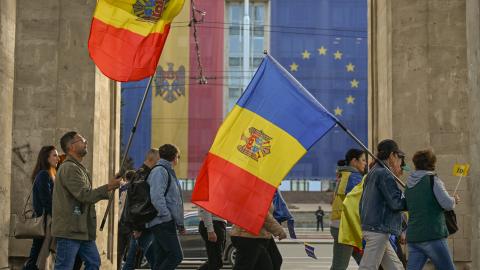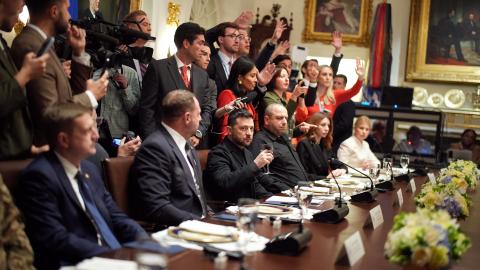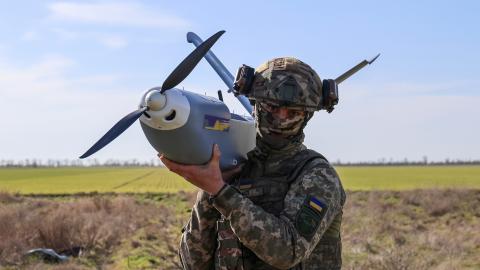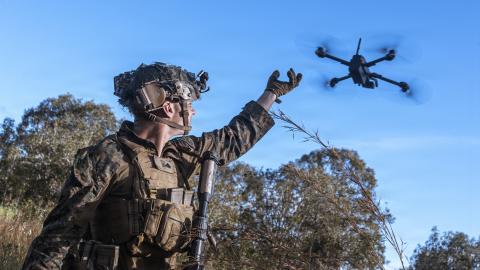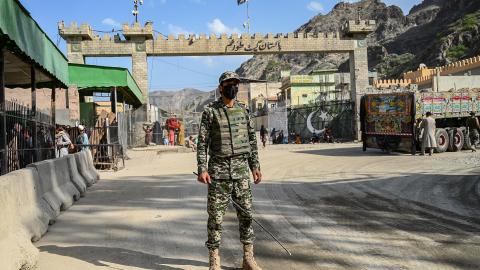In late August 2025, the Pakistani military once again conducted strikes in eastern Afghan provinces against Tehrik-i-Taliban (i.e., Pakistani Taliban) militants following strikes in March, prompting a harsh response from Afghanistan’s Taliban regime.1 A few weeks prior, in late July, Operation Sarbakaf had resumed in Bajaur, Khyber Pakhtunkhwa (KP) province, after peace talks between local jirgas2 (tribal councils) and militant commanders failed, forcing thousands of families to flee their homes.3 The failed negotiations exposed both the limits of local mediation and deeper governance tensions, as provincial authorities publicly warned that the federal government’s hardline approach would only deepen community alienation, cause displacement, and undermine future dialogue prospects.4 Shortly thereafter, a suicide attack on a Balochistan National Party rally in Quetta, Balochistan, in early September served as a reminder of the multi-front nature of Pakistan’s security challenge.5
After two decades as a partner in the global war on terror, Pakistan now finds itself confronting not just a resilient militant landscape but one that is deeply intertwined with a multidimensional legitimacy crisis—in which contested narratives, governance gaps, and regional tensions undermine the tactical gains of military operations.6 Pakistan’s reliance on military force underscores the security establishment’s enduring faith in hard-power solutions. Yet the reemergence of high-tempo violence and Pakistan’s position as the world’s second-most terrorism-affected country reveal more than a tactical-strategic disconnect.7 While kinetic operations can temporarily stem outbreaks of violence, they do little to erode the narratives that militants weave into their broader tool kit for survival, adaptation, and influence.
Militants’ Tool Kit for Survival, Adaptation, and Influence
Pakistan’s militant landscape is highly diverse and fragmented; militant factions frequently merge, splinter, and realign.8 The Tehrik-i-Taliban Pakistan (TTP), separatist ethnic Baloch insurgents such as the Balochistan Liberation Army (BLA), and the Islamic State Khorasan Province (ISKP) are some of the region’s deadliest organizations. They operate within a broader ecosystem of militancy encompassing Islamist, sectarian, ethnonationalist, Kashmir-oriented, and global jihadist groups. Against this backdrop, the most influential actors have refined distinct narrative strategies that transform local grievances into compelling anti-state claims. Regional militant organizations such as TTP, BLA, and ISKP have paired tactical and technological adaptations with potent legitimacy narratives as part of a shared tool kit that exploits Pakistan’s governance failures and regional isolation. The TTP frames Pakistan as an illegitimate “apostate” state serving Western interests, while Baloch militants employ anti-colonial rhetoric, framing their actions as a fight against resource exploitation. Both transform local grievances into compelling counter-state narratives.9 These narratives gain credibility precisely because they target governance gaps—from weak institutional capacity to repressive governance practices.10 Meanwhile, interstate rivalries with Afghanistan and India provide both sanctuary and external validation for anti-state messaging, contributing to a growing perception of strategic encirclement that becomes self-fulfilling.11
Collectively, Pakistan’s internal governance gaps and regional isolation have enabled militants to develop increasingly sophisticated capabilities, as evidenced by their inter-group alliances, coordinated multi-location attacks, and recruitment of women operatives.12 This capability-narrative convergence undermines state legitimacy through a mutually reinforcing cycle: Militant tactical successes validate anti-state messaging, while state excesses and hardline approaches generate new grievances, with each element strengthening the other. This dynamic reveals how Pakistan’s current security crisis operates across multiple interconnected fronts, from the battle for credible narratives and effective governance to regional diplomatic standing, requiring legitimacy rebuilding as the cornerstone of any effective counterterrorism strategy.
First Front: Militant Narrative Warfare as a Force Multiplier
While terrorism scholars have long recognized the communicative dimensions of political violence, the battle for narratives now represents a foundational front in Pakistan’s legitimacy crisis that operates as a force multiplier alongside kinetic operations. Non-state actors seek to gain credibility through a dual-track approach in which narrative successes enable operational capabilities and tactical victories validate anti-state messaging in a mutually reinforcing cycle. Focusing on Pakistan’s governance gaps, deep political polarization, and regional tensions, militant organizations construct narratives that present the Pakistani state as illegitimate while positioning themselves as defenders of marginalized communities. Though distinct forms of militancy shape Pakistan’s militant landscape, including religious (TTP), ethno-nationalist (BLA, BLF), and transnational jihadist (ISKP) forms, these groups use a similar tool kit of narrative warfare.
Anti-State Narratives
Militant organizations based in the Afghanistan-Pakistan region fuse operational innovations with narratives that reinforce each other’s anti-state messaging. The TTP has strategically recalibrated from religious puritanism to increasingly privilege Pashtun nationalism, invoking historical battles and framing its fighters as “sons of the soil” whose activities defend tribal honor against a “colonial” army.13 The TTP has also made efforts to theologically delegitimize the Pakistani state in response to Pakistan’s “Fitna al-Khawarij” designation (labeling the TTP as “religious deviants”) and other state-led efforts such as the decision by Pakistani state-aligned clerics to revoke the religious degree of the TTP’s chief commander. In doing so, the group fuses Islamist rhetoric with Pashtun nationalist narratives.14 This messaging is amplified by the TTP’s Umar Media, which has professionalized since 2021 to produce emotionally charged audio and video content as well as magazines alongside AI-generated news bulletins in multiple languages, including Sindhi, Punjabi, and Balochi.15 The dual strategy allows the TTP to link local grievances to state incompetence while exploiting grievances related to global issues like the Gaza conflict to appeal to the more religiously inclined.16
The BLA portrays the Pakistani state as an exploitative colonial entity, pushing narratives of liberation from Punjabi domination and Chinese exploitation.17 It has escalated ethnic-based targeting, explicitly threatening more attacks on the country’s Punjabi community and labeling them as “infiltrators and spies.”18 The BLA’s messaging showcases educated recruits from prestigious universities in Punjab and Sindh, whom it portrays as socially conscious revolutionaries in tribute videos that incorporate other elements, like popular music.19 It amplifies this messaging through professional-quality propaganda that includes videos featuring suicide attackers’ final messages, real-time operational updates during fedayeen attacks (self-sacrificial missions), and multilingual content.20
ISKP links local grievances to global jihad through its Al-Azaim Foundation, producing content in over a dozen languages including English, Urdu, Russian, Farsi, and Uzbek.21 The group’s links to notable external operations, including the 2024 attacks in Moscow and Iran, lend credibility to its claims of global jihadist influence.22 ISKP’s regionally oriented propaganda, such as its Pashto-language magazine Khurasan Ghak, employs a multidimensional approach, condemning the Afghan Taliban as puppets of Pakistan while criticizing other anti-Pakistan militant groups (for example, it dismisses the TTP as a replica of the Afghan Taliban following the same path of heresy and declares the BLA an enemy for its ethnic nationalism).23 This comprehensive competitor delegitimization extends to religious scholars and Islamist political parties whom ISKP accuses of betraying Islamic principles.24 Through this approach, ISKP not only exploits local grievances but embeds them within a larger narrative of a global war against Muslims, in which local “apostate” governments serve as puppets of the West. This offers its adherents a transnational identity that not only validates their frustrations but also connects them to a larger mission with divine sanction for violence.
A salient cross-cutting trend within these narratives is the intensifying outreach to women by otherwise ideologically divergent groups. The BLA’s Majeed Brigade has introduced female suicide bombers and frames women as symbols of collective sacrifice in propaganda.25 Similarly, the TTP has developed specialized recruitment materials aimed at female audiences, positioning women as “guardians of jihad.”26 ISKP has also targeted women with some of its publications, such as an Urdu booklet outlining 10 “responsibilities” for Muslim women, from religious education and child indoctrination to military preparedness under the banner of defensive jihad. Such audience segmentation and targeted recruitment strategies underscore the efforts by militant groups to diversify their appeal across demographic lines. Collectively, these narratives create an anti-state discursive ecosystem characterized by shared propaganda patterns across ethnic and ideological lines.27 The convergence is particularly evident in their targeting of educated urban youth and marginalized communities alike through AI-generated campaigns and through the exploitation of both local grievances and global conflicts like that in Gaza.28 This narrative synchronization, if not necessarily intentional, erodes state credibility more effectively than any single group could on its own while providing multiple entry points for the radicalization of new recruits.
Operational Capabilities as Narrative Validation
Overall, these narrative successes enable and subsequently receive reinforcement from the militants’ growing operational capabilities, which leverage advanced technologies. The TTP’s claim of over 600 attacks in May–June 2025 included coordinated assaults using drones and improvised explosive devices (IEDs), reflecting its access to weapons through cross-border networks.29 Similarly, Baloch groups have deployed thermal sights and magnetic IEDs in their intensified campaign; the BLA claimed 284 attacks in six months, including attacks on police stations and critical infrastructure.30 ISKP has evolved from a localized threat into a regional and international network that uses facilitation nodes in Turkey and elsewhere to virtually guide sympathizers in Europe. It favors resource-light plots run by small cells and remote handlers who provide tactical guidance on target selection, weapons procurement, and logistics.31
Groups have moved beyond isolated operations to form tactical alliances that amplify their collective impact. The Baloch Raji Ajohi Sangar (BRAS), an umbrella organization formed in 2018 that includes the Balochistan Liberation Army (BLA), Balochistan Liberation Front (BLF), and other separatist groups, has coordinated increasingly sophisticated joint operations across Balochistan.32 In March 2025, the BRAS and the Sindhudesh Revolutionary Army (a Sindhi separatist group) announced plans to form a unified “National Army of Balochistan,” marking efforts to coordinate different ethnic separatist movements.33 Similarly, the Ittehad-ul-Mujahideen Pakistan (IUM) emerged in April 2025 primarily as an alliance of smaller Islamist militant groups operating in Khyber Pakhtunkhwa’s merged tribal districts. These include the Hafiz Gul Bahadur Group,34 a North Waziristan Taliban faction that has alternated between peace deals and conflict with the state; Lashkar-e-Islam, a Khyber-based Islamist group that has historically competed with the TTP for control of the Khyber Pass region; and the newly formed Harkat Inqilab-e-Islami Pakistan.35
Collectively, such groups’ operational successes lend credibility to their claims of growing strength and state weakness, creating a feedback loop wherein narrative power enables operational capability. Most critically, the convergence around narrative warfare enables militants to compete directly with the state for legitimacy, transforming their tactical wins into political challenges that persist beyond isolated kinetic operations.
Second Front: Domestic Governance Gaps
The second front of Pakistan’s legitimacy crisis stems from governance gaps that have created the political and economic conditions militants exploit to construct their narratives. The effects of these governance gaps are evident across multiple dimensions, from political polarization and institutional breakdown to economic woes and repression of the civic space, each one reinforcing the others.
Political Fragmentation and Institutional Breakdown
Balochistan’s evolving insurgency now involves educated middle-class participants and women, which is remarkable in Pakistan’s most conservative province.36 Most notably, Pakistan’s military establishment has faced unprecedented public scrutiny and disapproval in recent years. Contested election results in 2024 and allegations that post-poll manipulation denied the Pakistan Tehreek-e-Insaf (PTI) party its expected electoral mandate, followed by the removal and imprisonment of former PTI Prime Minister Imran Khan, have created deep societal divisions.37 Additionally, political divisions between the opposition PTI-led provincial government in Khyber Pakhtunkhwa—where over 8,000 TTP militants reportedly operate38—and federal authorities have complicated counterterrorism coordination efforts. The Khyber Pakhtunkhwa government’s resistance to federal approaches has included provincial Chief Minister Ali Amin Gandapur’s public opposition to purely militarized strategies and his decision to form provincial jirgas to negotiate with the Taliban, which federal authorities condemned as a “direct assault on the federation.”39 This fragmentation was also evident during Operation Sarbakaf in Bajaur in July 2025, during which peace talks between local jirgas and militant commanders failed to secure militant relocation or civilian safety guarantees.40 The federal-provincial divide was on further display in September 2025, when the federal minister of state for law and justice, Barrister Aqeel Malik, claimed that PTI has “always supported anti-state elements” and criticized its reconciliation policy.41 Without political alignment between the federal and provincial governments, counterterrorism efforts will continue to be disjointed, and competing approaches will undermine rather than complement each other.
Civic Space Repression
Facing mounting security challenges, the Pakistani state has doubled down on measures that strengthen militant claims about repressive governance.42 At the broadest level, the government’s continued use of military trials against civilians has undermined judicial independence, while widespread arrests of protesters and criminalization of dissent are eliminating avenues for voicing legitimate grievances.43 Targeted crackdowns on specific movements and organizations have accompanied these systemic restrictions. The banning of the Pashtun Tahaffuz Movement (PTM) in October 2024 under anti-terrorism laws, followed by mass arrests of PTM coordinators during protests across Khyber Pakhtunkhwa, exemplifies the state’s suspicion of advocacy.44 Similarly, the arrests of Mahrang Baloch and other members of the Baloch Yakjehti Committee (BYC), who have protested enforced disappearances and extrajudicial killings in Balochistan, underline the continued suppression of human rights activism.45 In August 2025, the Pakistani Parliament reinstated controversial powers allowing law enforcement to detain terrorism suspects for up to three months without charge—powers that expired in 2016 but that it revived despite warnings from the Human Rights Commission of Pakistan. That same month, the state extended Section 144 measures (a colonial-era criminal code authorizing restrictions on public assembly) across Balochistan for 15 days, prohibiting gatherings of more than five people, while suspending mobile data services for three weeks to prevent militants from coordinating attacks.46
Economic Hardship
Pakistan’s severe economic crisis has reduced resources available for sustained security operations. Today’s military operates under significant budget constraints amid double-digit inflation and IMF-imposed austerity measures, with inflation soaring close to 40% in May 2023.47 Although Pakistan’s economy stabilized in 2024, resources remain limited for sustained policing and counterterrorism operations, which means Pakistani security forces are likely to fight an increasingly defensive battle against strengthening terrorist networks.48 Repeated attacks on Chinese infrastructure projects and engineers—primarily by Baloch militants opposing resource exploitation, but also by ISKP—have created additional economic pressures as Pakistan tries to balance the costs of increased security measures against the country’s development needs.49
The human cost of Pakistan’s overall economic deterioration is particularly acute in conflict-affected regions like Khyber Pakhtunkhwa and Balochistan, where youth unemployment rates have reached over 40%.50 Food insecurity affects over 40% of households in the former Federally Administered Tribal Areas (FATA, the formerly semi-autonomous tribal territories along the Afghan border that merged with Khyber Pakhtunkhwa in 201851), creating conditions of desperation. The closure of over 2,000 schools in merged tribal districts due to security concerns and budget cuts has left an entire generation vulnerable to radicalization through unregulated madrassas.52 Healthcare access has similarly deteriorated; infant mortality rates in conflict zones exceed 80 per 1,000 births, nearly double the national average.53 While inflation has fallen and foreign exchange reserves have stabilized, these macroeconomic improvements have yet to translate into meaningful relief for conflict-affected populations, and security concerns continue to impede service delivery and economic opportunities.54
Third Front: Regional Isolation and Strategic Encirclement
The third front concerns Pakistan’s deteriorating regional relationships. Hostile borders with Afghanistan and India have become sources of militant sanctuary and propaganda validation. Pakistan increasingly blames both Afghanistan and India for sponsoring terrorism, creating a sense of strategic encirclement and isolation in the region.55 The Taliban’s return to power in Afghanistan has eliminated Pakistan’s “strategic depth” on its western front, creating a sanctuary for anti-Pakistan militants. Pakistan’s August 2025 strikes against TTP militants in eastern Afghan provinces highlighted this dynamic, prompting a formal demarche warning of consequences from the Taliban government.56 Pakistan’s tense regional environment, particularly crises with India and Afghanistan, is exploited by militant groups to validate their propaganda and advance recruitment. They opportunistically frame these crises as evidence of either Pakistan’s weakness and isolation or its complicity with hostile regional powers.57
With respect to Afghanistan, the ideological and tribal bonds between the Afghan Taliban and the TTP have undermined Pakistan’s strategy of hybrid coercion—which combines diplomatic pressure, economic leverage, and military strikes in an effort to compel the Taliban to act against TTP safe havens.58 The availability of these cross-border safe havens has rendered traditional military approaches against the TTP less effective, contributing to deteriorating Afghanistan-Pakistan relations.59 Pakistan’s expulsion of Afghan refugees, cross-border skirmishes with the Afghan Taliban, and intermittent targeted strikes against TTP hideouts in Afghanistan have only worsened bilateral relations.60 China, which has long been Pakistan’s strongest economic and diplomatic partner and has also been building ties with the Taliban regime, recently held trilateral meetings in August with Pakistani and Taliban officials, but these did not result in any diplomatic breakthrough.
Regional tensions escalated dangerously following the April 2025 Pahalgam terrorist attack in Indian-administered Kashmir.61 India alleged that The Resistance Front (TRF), a group it identifies as an offshoot of Pakistan-based Lashkar-e-Taiba, carried out the attack, which killed 26 Indian tourists. Indian investigators asserted that they had uncovered digital traces leading to safe houses in Pakistan and suspected involvement of Pakistan’s intelligence services in the attack.62 Pakistan categorically denied these allegations, rejecting the evidence as fabricated, and demanded proof of TRF’s links to the Pahalgam killings.63 In response to the attack, in May 2025, India suspended its 1960 water-sharing agreement (Indus Waters Treaty) with Pakistan and launched Operation Sindoor, which involved escalating artillery exchanges across the contested India-Pakistan border and aerial combat between Indian and Pakistani fighter jets.64 Seizing upon the escalating tensions, on May 11, 2025, the Balochistan Liberation Army expressed rhetorical support for Indian military action against Pakistan.65 The BLA’s willingness to align with Pakistan’s external adversaries may ultimately be a consequence of Islamabad’s poor strategic approaches to both domestic insecurity and regional tensions.66
Beyond Afghanistan, Pakistan’s tense relationship with Iran has enabled cross-border smuggling networks that fund Baloch insurgent groups, while periodic border skirmishes create instability.67 In January 2024, this instability erupted into direct military confrontation when Iran conducted airstrikes in Pakistan’s Balochistan province, targeting Jaish al-Adl militant bases (a Sunni Baloch group fighting Iranian forces in southeastern Iran) and prompting retaliatory Pakistani strikes on Iranian territory.68 Though both countries quickly deescalated, cross-border smuggling, arms trafficking, and militant movement continue to benefit local militancy and deepen interstate mistrust.
Taken together, these regional crises illustrate how militants thrive in cross-border sanctuaries that emerge when diplomatic relations deteriorate and when weapons and fighters flow freely across hostile borders. Moreover, militant propaganda gains credibility under such conditions by portraying Pakistan as isolated and besieged by enemies. Unless Pakistan can rebuild trust with its neighbors and establish functional counterterrorism cooperation, the regional environment will continue to provide militant groups with the sanctuaries, resources, and rhetorical ammunition to sustain their insurgencies.
When Legitimacy Enabled Victory: The Zarb-e-Azb Paradox
The persistence of militancy today stands in stark contrast to Pakistan’s last major counterterrorism success: Operation Zarb-e-Azb (2014–16), which ushered in the TTP’s decline by 2018 (from which the TTP has since rebounded). Zarb-e-Azb was effective not simply because of strong military tactics but because the conditions surrounding the operation gave the state legitimacy to pursue its strategic aims. First, the December 2014 TTP massacre of 149 people, including children, at the Army Public School in Peshawar (which occurred several months after the launch of the operation) generated unprecedented national consensus, temporarily uniting Pakistan’s fractured political landscape in support of action against the militants.69 This consensus gave unusual political cover to the military and facilitated the launch of the National Action Plan (NAP), a 20-point framework.70 While implementation was inconsistent, the framework was important because it combined kinetic operations (i.e., Zarb-e-Azb in the FATA) with a parallel political, judicial, and governance reform agenda that involved efforts such as regulating madrassas and dismantling terrorist financing networks.71 Second, Pakistan enjoyed substantial external support at this time: U.S. military aid, intelligence-sharing, and drone strikes helped enable Pakistan to strike militants in remote areas.72
After the mid-2010s, however, U.S.-Pakistan cooperation declined sharply as U.S. frustrations mounted over Pakistan’s alleged failure to combat Afghan Taliban safe havens on its side of the border. The U.S. suspended military aid in 2018, and relations were tense up to and through the U.S. withdrawal from Afghanistan in 2021.73 U.S.-Pakistan security cooperation has recently resumed under President Trump, and the U.S. government designated the BLA a foreign terrorist organization in August 2025; moreover, talks are underway to expand U.S.-Pakistani economic collaboration in critical minerals.74 These steps nonetheless fall far short of the comprehensive intelligence and operational support from the U.S. military and intelligence services that underpinned Zarb-e-Azb. The current political polarization within Pakistan precludes the national consensus that once existed in support of counterterrorism efforts, while governance and judicial bottlenecks prevent follow-through on previous pledges of reform. Pakistan’s requests of Washington for specific tactical equipment, such as communication equipment, to assist its counterterrorism efforts point to the gap between state forces and militant groups, which has been exacerbated by regional militants’ acquisition of American military equipment that U.S. forces abandoned in Afghanistan in 2021.75
A Legitimacy-Centered Counterterrorism Strategy
Pakistan’s most pressing challenge today is not defeating militants tactically. It is rebuilding legitimacy across three critical fronts—ideological credibility, effective governance, and regional diplomatic standing—to prevent the cyclical resurgence of militancy. Military operations can clear territory and disrupt networks, but they cannot dismantle the political conditions that allow militants to reconstitute, recruit, and expand. Pakistan’s sustainable path forward requires rebuilding legitimacy not as an addition to counterterrorism strategy but as its foundation.
Pakistan’s Information Warfare Strategy
Pakistan must pivot from reactive censorship to proactive, high-quality messaging that builds state legitimacy through grassroots local influencers and community figures rather than relying solely on platform takedowns and state-aligned religious scholars. Broad cybercrime laws and mobile data suspensions do little to undermine militant propaganda and ultimately reinforce militant claims about state authoritarianism.76
To compete in this marketplace of ideas, Pakistan requires a two-pronged strategy. First, it must invest in authentic community voices, grassroots influencers, teachers, tribal elders, and student leaders who can credibly address the local grievances that militants exploit, including economic exclusion, security force excesses, and political repression. Second, it must develop digital parity by equipping civilian agencies with the production capacity to match militant media in quality, reach, and adaptability, including in regional languages and across multiple platforms. State rhetoric that portrays militancy solely as “externally sponsored” or reduces militants to labels such as Khawarij or Fitna al-Hindustan77 risks appearing as an evasion of responsibility. A sustainable information strategy, however, must couple effective counter-messaging with sociopolitical reform. Only when the state can credibly embody the values it communicates will its narratives carry weight.
Governance Gaps in Conflict Areas
In areas such as Balochistan and the former FATA, the absence of transparent grievance-redress mechanisms, weak judicial accountability, and the collapse of jirga-led negotiations have created a vacuum.78 Militants fill this void with their own parallel governance, from madrassas to dispute resolution committees, presenting themselves as more responsive to popular needs than the state. Rebuilding state legitimacy in this realm requires civilian-led implementation of the National Prevention of Violent Extremism policy, investment in police and judicial reform, and rehabilitation and reintegration programs such as the Sabaoon initiative, a disarmament, demobilization, and reintegration (DDR) program that is supposed to provide education and vocational training as pathways away from militancy.79 Suppression of ethnic civil society groups like the PTM or BYC only deepens alienation, validating militant claims of defending victimized communities.
Instead of treating journalists, advocacy groups, and human rights organizations as adversaries, the state must see them as partners. It can begin by working to release detained civil society activists, addressing grievances related to enforced disappearances and extrajudicial killings, and moving away from military trials for civilians and broad cybercrime laws.80 Accidental civilian deaths during military operations require prompt acknowledgment, transparent inquiry, victim compensation, and accountability. Such measures would not only help rebuild trust with aggrieved societies but also transform civil society into an early-warning system against radicalization.
Regional Rivalries
Regional rivalries constitute Pakistan’s third challenge, as hostile relationships with Afghanistan, Iran, and India create conditions that sustain militants’ sanctuaries and geographic fluidity. These frictions also distort border economies in ways that affect vulnerable societies: Repeated crossing closures and other restrictions depress Afghanistan–Pakistan trade and push commerce toward costlier or illicit channels, which can finance militancy.81 Rebuilding legitimacy will require replacing proxy habits with sustained diplomatic engagement, implementing genuine confidence-building measures with neighbors, and ensuring that development projects serve local communities rather than appearing as externally imposed initiatives that displace indigenous populations.
Conclusion
Pakistan’s counterterrorism strategy has thus far focused on defeating militants where they are rather than on preventing them from emerging where state legitimacy is lacking. Until Pakistan can offer its citizens a more compelling and credible alternative to what militant groups provide, tactical victories are likely to be short-lived. While these legitimacy-building recommendations offer a path forward, substantial structural obstacles to their implementation are admittedly embedded within Pakistan’s political economy, society, and foreign policy tendencies. The military establishment’s dominant role in foreign and security policy and the use of proxy forces against regional rivals have persisted through multiple civilian governments, making fundamental shifts unlikely in the near term.
Rather than achieving transformative change, Pakistan can achieve progress through measured steps and incremental benchmarks. In the near term, regional stability might improve through increased economic interdependence that raises the costs of conflict while creating incentives to address shared security threats. With India, this could mean aiming to revive the 2011-12 roadmap for trade normalization, making conflict escalation costlier for both sides, and establishing communication channels beyond military hotlines.82 With Afghanistan, realistic steps might include maintaining diplomatic presence, continuing humanitarian assistance, and leveraging Pakistan’s control over Afghan trade routes while emphasizing common threats like ISKP or even climate-induced water scarcity. In the civil society space, wholesale liberalization remains improbable. However, economic pressure from international lenders and the military’s desire for Western security partnerships could drive selective openings, as occurred during Pakistan’s 2019–20 push for Financial Action Task Force delisting.83
Similarly, while it is unlikely that the Pakistani government will completely abandon its practice of attributing militancy to external forces, more nuanced messaging that also acknowledges internal drivers of civil unrest and grievances could help diminish the growing trust deficit between state institutions and civil society. Such efforts could become more likely if the costs of Pakistan’s rhetoric of denial become unsustainable—for example, if the military loses support from key constituencies, such as urban middle classes and business communities. Overall, the most realistic hope lies in gradual, pragmatic adjustments that slowly rebuild trust between state and society and that, in turn, contribute to resolving Pakistan’s cyclical resurgence of militancy.
